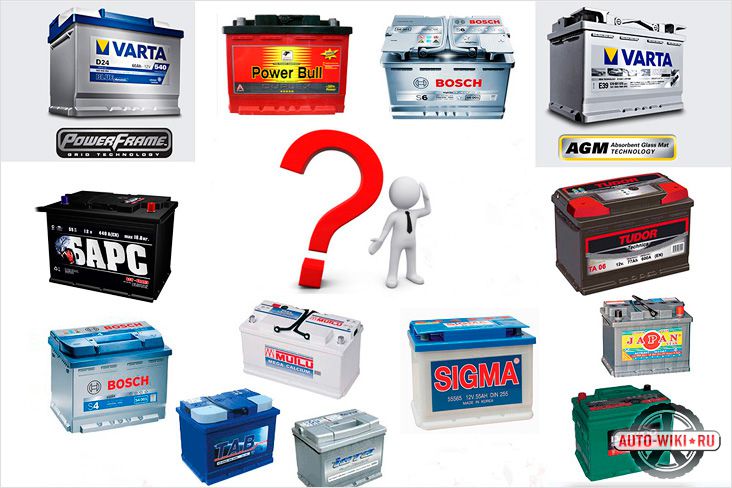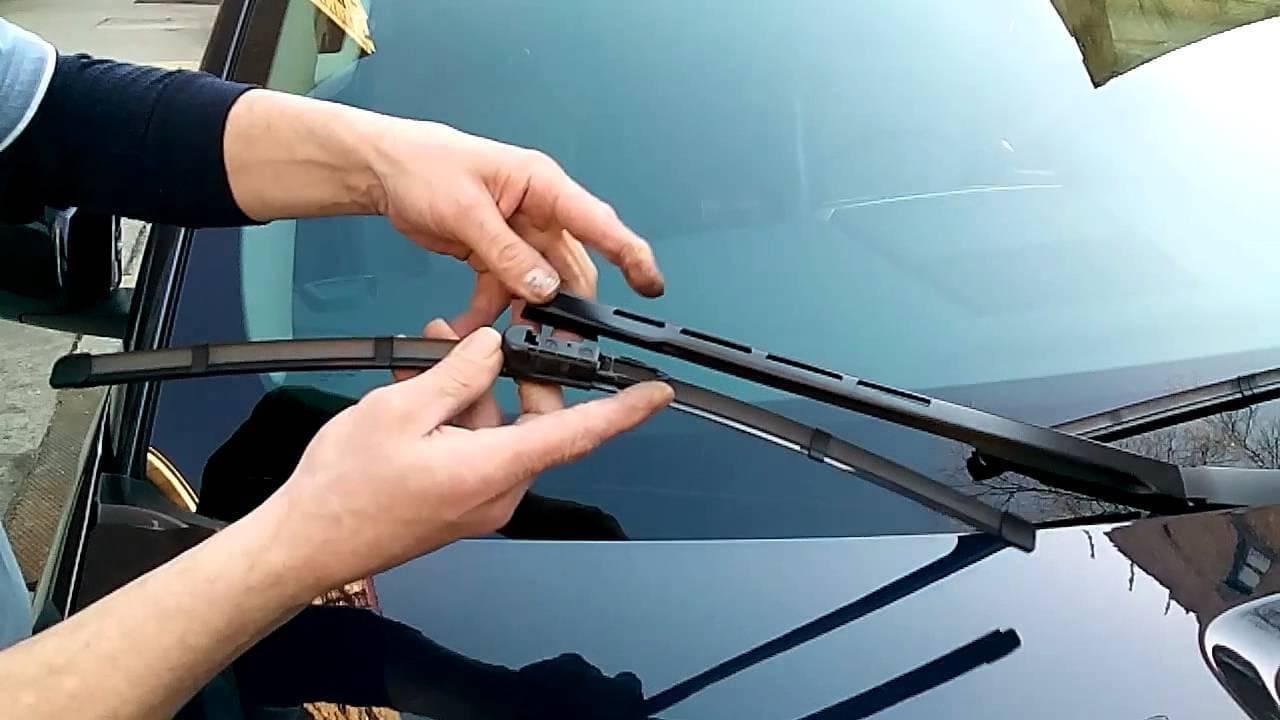
Windshield selection
Content
Many car owners, faced with such a problem as replacing car windows, ask themselves the question: “Which glass to buy, original or non-original?”
What should be auto glass: original or not
On the one hand, everyone would like to have only original parts in their car, but on the other hand, original elements cost two or even three times more than non-original ones. So how can you buy good auto glass, save a little and not lose quality? Before you can answer this question, you need to understand a lot.

Original parts are installed at the factory that produced this or that car. None of the factories produces auto glass, they are purchased from contractors. The name "original" glass is only for a certain brand of car, for other brands it will no longer be considered original. Based on this, it can be understood that the word "original" hides the entirety of a particular glass manufacturer.
Auto glass manufacturers of different companies differ significantly from each other. European manufacturers soften car windows, the disadvantage of which is increased friction. For Chinese manufacturers, they are tougher because they have a completely different chemical composition than glass melt.
The service life of glass for a car of both manufacturers depends on many factors, one of which is operating conditions. Care and maintenance are exactly the same for both manufacturers.
The big difference between European and Chinese auto glass is the price. The Chinese are much shorter than the originals. And this does not mean that its quality is worse. Sometimes even Chinese parts are supplied to several factories, including European ones, and the price for them will still be relatively lower. The thing is that in China, the cost of production is low and the material is relatively cheap.
Types of windshields and technologies for their production
Auto glass manufacturers use different technologies. For manufactured vehicles:
- Stalinist. The material is heated to high temperatures and slowly cooled. Stalinite is durable; on impact, it shatters into small, non-sharp fragments.
- Triple. Triplex production is based on the use of organic glass, film and glue. The material is covered with a film on both sides and glued. Expensive material absorbs sounds well, is durable and does not require complex repairs.
- Multilayer. The most expensive and durable option. Several sheets of material are glued together. Laminated glass is universally installed in elite-class cars and collectible armored vehicles.
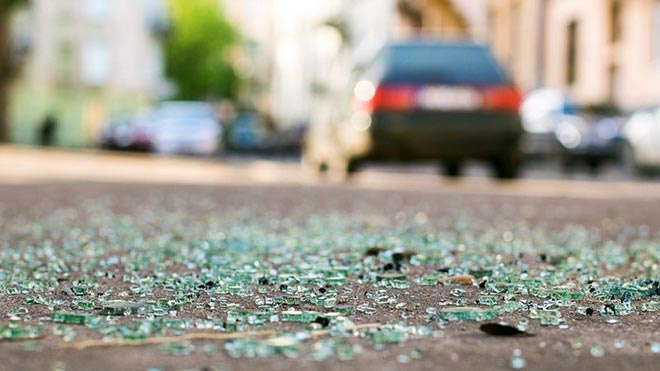
Triplex would be an acceptable option.
Types of car glass
Tempering of stalinite glass during heating to 650-6800 C and subsequent rapid cooling with a current of cold air creates residual forces on its surface aimed at compressing and increasing surface strength and thermal stability. When broken, tempered glass under the influence of static surface forces breaks up into many small fragments that do not have sharp edges and are safe for the passenger and driver.
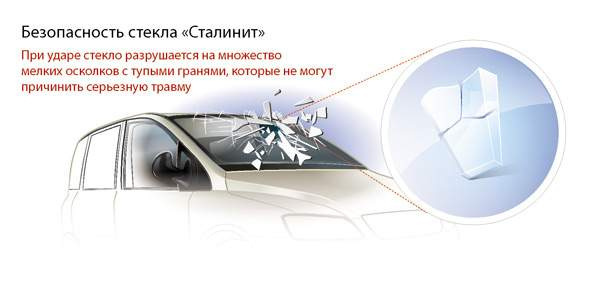
Stalinite safe but brittle.
Stalinite is a glass used in the automotive industry for rear and door glass, as well as sunroofs. It can be recognized by the brand with the letter "T" or the inscription Templado, which means "Tempered". Russian tempered glass for cars is marked with the letter "Z".
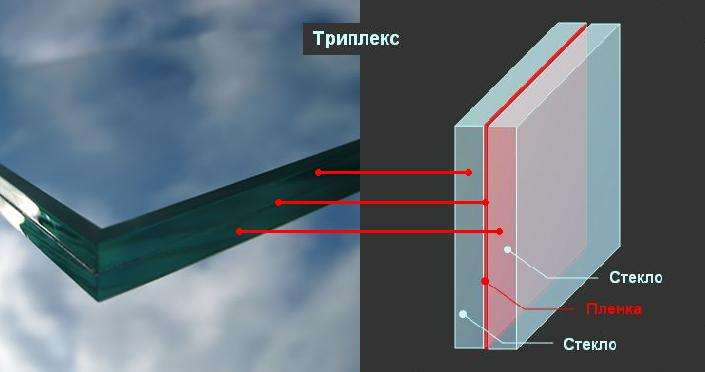
Triplex is more stable and reliable
Triplex: glass, which is two sheets connected by a polyvinyl butyl film. The organic elastic layer creates impact resistance of glass to external mechanical influences. When the glass is broken, its fragments do not fall out, but stick to the plastic layer, therefore they do not pose a threat to the driver and the passenger sitting in front. Impact-resistant triplex glass is used in the automotive industry as body windshields.
Most often used in the manufacture of windshields. In addition to tear resistance, triplex glass has additional performance characteristics that contribute to its distribution. These include the ability to absorb noise, reduced thermal conductivity and heat resistance, the possibility of staining.
Laminated automotive glass, which consists of several sheets and has more than one adhesive organic layer, is very rarely used in exclusive luxury car models. They create good heat and sound insulation of the car interior, and can also be used in armored cash-in-transit vehicles.
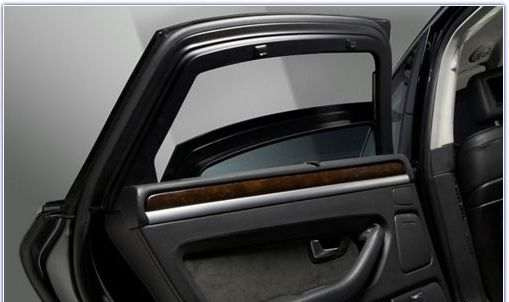
Armored laminated glass Audi A8 L Security. Glass weight - 300 kg, calmly withstands blows from automatic weapons
It is possible to professionally and efficiently install auto glass on a car body only with the help of special equipment and materials that are available in workshops and repair shops. In the presence of minor damage in the form of microcracks and chips, they can be removed by polishing without removing the glass. It is advisable to replace the glass if there are large longitudinal cracks that threaten its destruction. Automotive glass can be installed with glue or rubber seals.
The first, more progressive method gives the body additional rigidity. Possesses the high durability and tightness of connection. The second method, using rubber seals, belongs to the classical method, but is gradually disappearing from practical use.
Auto glass is marked in a unified way, adopted among glass manufacturers, and is marked on one of the corners. Glass marking contains certain information about the type and its manufacturer.
International terminology code
In British English (UK, Australia, New Zealand), the term "windshield" is used to refer to a windshield. In addition, vintage sports car windshields that are less than 20 cm (8 inches to be exact) are sometimes referred to as "aeroscreens".
In American English, the term "windshield" is used, and "windshield" usually refers to a diffuse or polyurethane microphone coating that reduces background noise. In British English, the opposite is true.
In Japanese English, the equivalent of a windshield is "front window".
In German, "windshield" would be "Windschutzscheibe", and in French "pare-brise". Italian and Spanish use the similar and linguistically related terms "parabrezza" and "windshield", respectively.
DIY windshield replacement steps
Remove old windshield
A twine or a special knife is inserted between the glass and the groove and the old sealant is cut off. Be very careful when walking around the area around the dash to avoid damaging the plastic.
Preparing a place for gluing the windshield
With a construction knife, we cut off the remnants of the old sealant. The molding in this case, as a rule, fails, but we do not forget to buy a new one, so we don’t worry too much. Testing new glass for your future place.
Make notes with a marker if necessary. On some car models there are special stops that will not allow incorrect installation and replacement of the windshield. If you don't have a glass holder, prepare the area on the hood by covering it with something soft beforehand so as not to damage the new windshield.
Degreasing glass grooves
Either a degreaser from the kit or an anti-silicone degreaser.
Filling
It is not recommended to apply a primer on the remains of the previous sealant. The primer is applied in one layer with a brush or swab from the kit. The primer is applied at the place of gluing on the body, and on the glass at the place of expected contact with the groove.
Activator
They process the unremoved remnants of the old sealant.
Do's and Don'ts of Windshield Replacement
1. Avoid loud slamming of doors. Most cars have a sealed system, so try not to slam the doors right after installing the new glass. Slamming the door will create excess air pressure on the windshield, which can easily break the new seal. This, in turn, will create leaks and move the glass out of its original position.
2. It's not time to wash your car yet! After replacing your car windshield, do not wash it for the next 48 hours. At the same time, we want to note that neither automatic nor hand washing at this time is undesirable. Keep this vital tip in mind and avoid any unnecessary water or air pressure in your vehicle for at least 48 hours or so.
If you ignore this advice, you can simply damage the new glass seal, which has not yet been properly put on. Meanwhile, the windshield dries, the wheels of the car can be washed by yourself, of course, with your own hands.
3. Wait with trips. If you've just installed a windshield on your car, try not to drive it for at least an hour or two. As you may have noticed, to replace the glass, you will need glue and the glass itself. After all the procedures, they need time to find a balance with the humidity and ambient temperature.
4. Replace wipers. Windshield wipers are mechanical devices that are constantly aimed at the windshield of the car, so there is a chance that they will damage the glass or leave nasty scratches on it. Thus, the glass will begin to wear out and therefore will need to be replaced every few months. Therefore, take action immediately, change the wipers as soon as possible.
5. Glass tape. As a rule, in the process of replacing the windshield with your own hands, a special tape is used to fix it. Make sure the same tape stays on the windshield for at least 24 hours. You can ride with this tape, it does not interfere with the view at all, but if you remove this tape, the support that the windshield now needs will be lost.
Aerodynamic aspects
As the experiments of the American researcher V.E. Leia on models in the wind tunnel, the geometry and position of the windshield seriously affect the aerodynamics of the car.
The minimum values of the aerodynamic coefficient Cx (i.e., the lowest aerodynamic drag), ceteris paribus, are obtained at an angle of inclination of the windshield of 45 ... 50 degrees relative to the vertical, a further increase in inclination does not lead to a significant improvement in streamlining.
The difference between the best and worst values (with a vertical windshield) was 8...13%.
The same experiments show that the difference in the aerodynamic coefficients of a car with a flat windshield and the windshield of the most aerodynamically advantageous shape (semicircular section, unattainable in a real car) under equal conditions is 7...12%.
In addition, the literature indicates that the design of transitions from the windshield to the roof, the sides of the body and the hood plays an important role in shaping the aerodynamic image of the car body, which should be as smooth as possible. Today, a spoiler cutter in the form of a “rear” trailing edge of the hood is widely used, which diverts air flow from the edge of the hood and windshield, so that the wipers are in the aerodynamic “shadow”. Gutters should not be located at the transition from the windshield to the sides of the body and the roof, as these transitions increase the speed of the air flow
The importance of using modern glued glass, which not only significantly reduces aerodynamic drag, but also increases the strength of the body structure as a whole, was emphasized.
